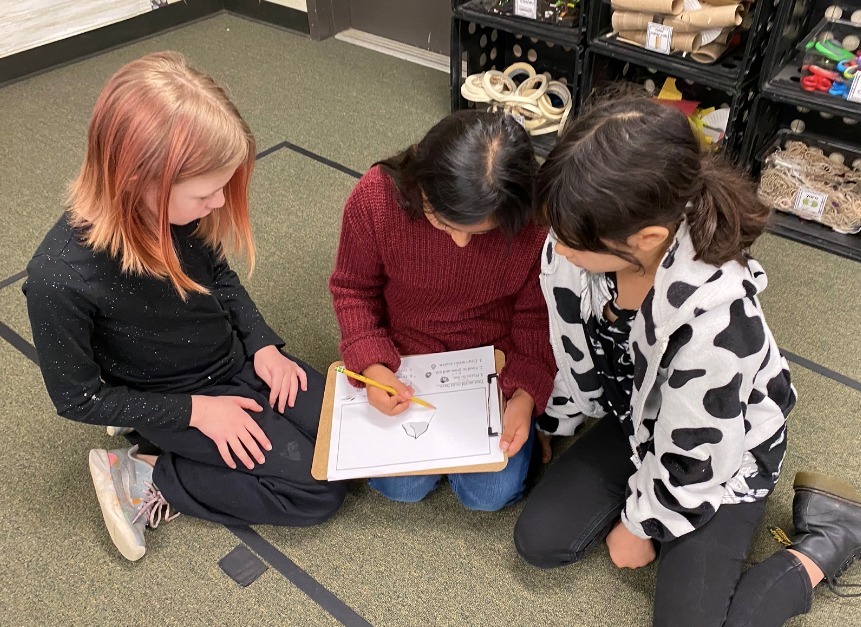ELL
English Language Learners (ELLs) meet state standards and develop English language proficiency in an environment where language and cultural assets are recognized as valuable resources to learning.The Lynden School District strives to remove learning barriers for all learners including those yet acquiring proficiency in English while they simultaneously acquire academic proficiency within a standards-based system. Therefore, educators value and welcome the many contributions you and your child(ren) provide by choosing to be part of the learning community in the Lynden School District.
Lynden School District ELL Resources
The district recognizes that families benefit from having access to information in their own language. Please contact the district’s Special Programs Office to request information in a language or format that best suits your needs. Here is a link to a Parent Brochure on Bilingual Education. It currently is available in 17 languages, including:https://www.k12.wa.us/MigrantBilingual/ParentBrochure.aspxYou can also click on the PDF of the language you prefer below:
| Language | Link |
|---|---|
| English | |
| Amharic | |
| Arabic | |
| Burmese | |
| Chinese | |
| Chuukese | |
| Hindi | |
| Japanese | |
| Khmer | |
| Korean | |
| Marshallese | |
| Nepali | |
| Punjabi | |
| Romanian | |
| Russian | |
| Samoan | |
| Somali | |
| Spanish | |
| Tagalog | |
| Telugu | |
| Tigrigna | |
| Ukrainian | |
| Vietnamese | PDF |
School Districts are required to help students learn English
School districts must ensure that students with limited English proficiency are able to participate meaningfully in school and are not denied access to equal educational opportunities. Since knowing and using English well is necessary for success in school, it is important that students who need additional help learning English get the help they need.
Language acquisition programs are required to have:
- Sound educational theory
- Effective implementation
- Program evaluation and modification
Transitional Bilingual Instruction Program and Title III
The Transitional Bilingual Instruction Program is funded by the state of Washington, and the Title III program is funded by the federal government. The goal of both is for students to develop English language proficiency while developing academics at grade level.
Funding for the Transitional Bilingual Instruction Program and Title III may pay for things like teacher salaries, professional development and training for teachers, specialized materials to help students learn English, parent involvement and literacy activities, instruction outside of the typical school day, and translation and interpretation specific to the program.
What is a Transitional Bilingual Instruction Program? A Transitional Bilingual Instruction Program:
- Uses two languages, one of which is English, as a means of instruction to build upon and expand language skills to enable a student to achieve competency in English;
- Teaches concepts and knowledge in the primary language of a student, while the student also acquires English language skills
- Tests students in the subject matter in English.
While research has shown that students learning English in a bilingual instruction program tend to be more academically successful in the long term than those in English-only programs, districts – like Lynden – that do not have the capacity to provide bilingual instruction can help students learn English through Sheltered Instruction instructional methods.Sheltered Instruction is an approach for teaching in strategic ways that make academic concepts comprehensible while promoting students’English language development. Lynden School District has identified that it uses the Sheltered Instruction model and continues to see students acquire English proficiency and exiting the ELL services at a desirable rate. Where students struggle the most,however, is to acquire academic proficiency in content areas such as reading, mathematics, and science.
What are the benefits of learning two languages?
Knowing more than one language is a skill to be valued and encouraged. Studies have shown that when children continue to learn their native language, this does not interfere with learning English – it makes the process easier!
Some of the benefits of bilingualism are:
- Intellectual: The best way to ensure academic success and intellectual development is for parents and children to use the language they know best with each other. Also, bilingual children have greater mental flexibility and use those skills to their advantage in math.
- Educational: Students who learn English and continue to develop their native language do better in school than those who learn English at the expense of their first language. It is much easier to learn to read in a language you already know. Once you can read in one language, it is easier to learn to read in another.
- Personal: A child’s first language is critical to his or her identity. Continuing to develop this language helps the child value his or her culture and heritage.
- Social: When the native language is maintained, important links to family and other community members are preserved and enhanced.
- Economic: The demand for bilingual employees throughout the world is increasing. The ability to speak, read, and write two or more languages is a great advantage in the job market.
Source: If Your Child Learns in Two Languages by Nancy Zelasko and Beth Antunez (U.S. Department of Education’s Office of Bilingual Education and Minority Languages Affairs, August 2000)
Did you know…
- Even if students appear to be fluent, they may still need support in developing the language skills they need to be successful in school. Research has demonstrated that achievement of “academic” English, the level needed to participate in instruction in English without help, takes four to seven years to develop.
- The state calculates Annual Measurable Achievement Objectives (AMAOs) for districts. AMAO 1 measures the annual increase in the number or percentage of children making progress in learning English. AMAO 2 measures the number or percentage of children attaining English proficiency. AMAO 3 measures the number or percentage of students learning English who reach academic standards in reading and math based on the state’s assessments. Ask your school about your district’s results or view them online.


